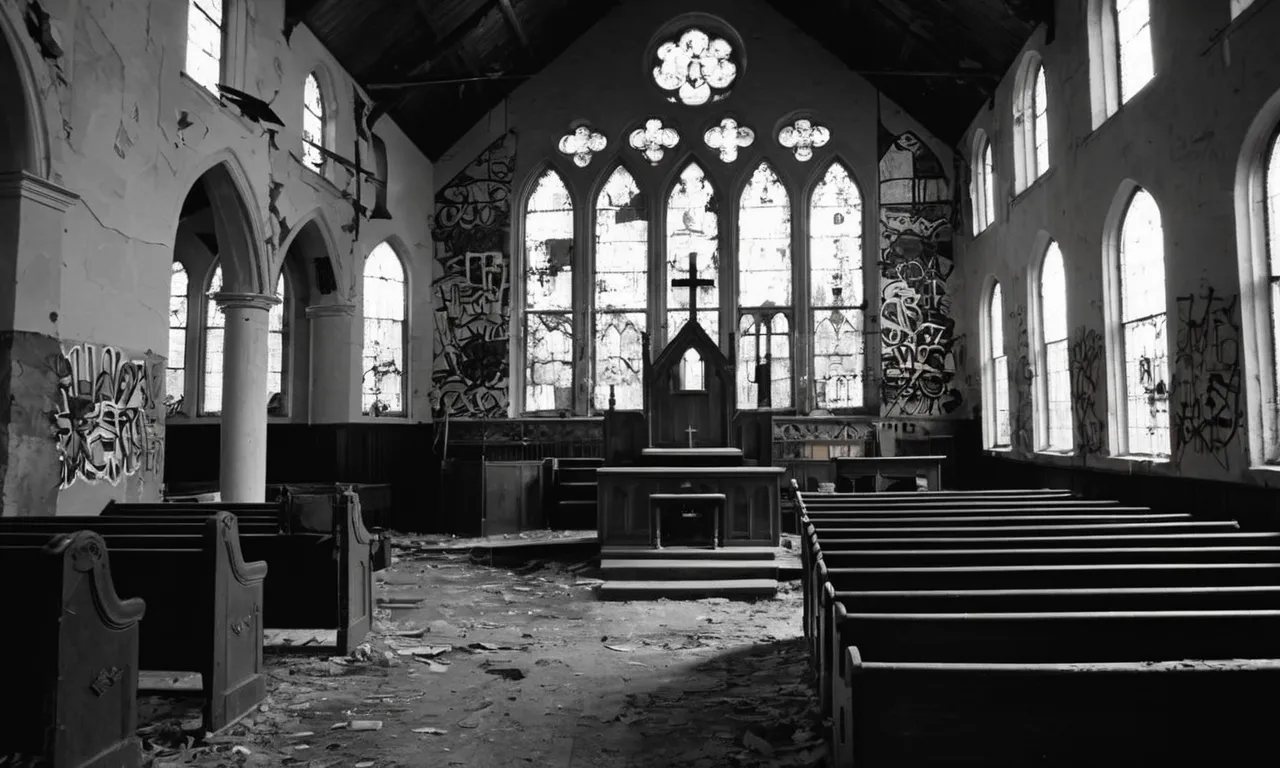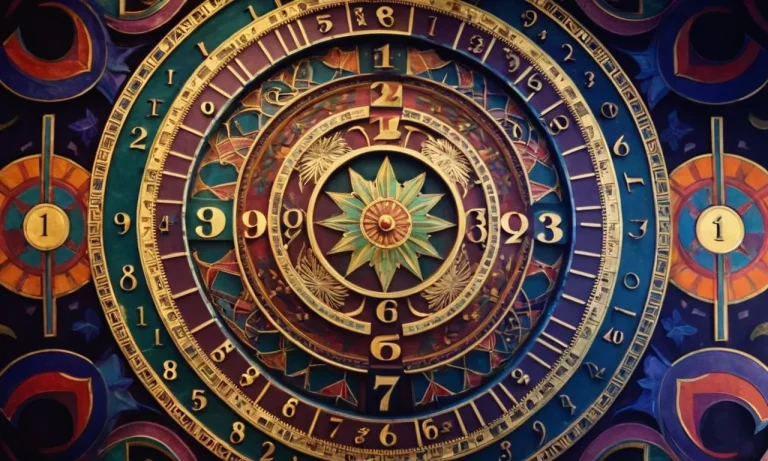What Is The Opposite Of God?
The concept of God often brings up thoughts of a supreme, divine being that created the universe and reigns over humankind. This powerful deity lies at the center of many religions and spiritual traditions. But if God represents the ultimate good force, what then is the polar opposite?
Does the idea of an ‘anti-God’ even make sense?
If you’re short on time, here’s a quick answer to your question: The Devil (or Satan in Christianity), demons in general, and the personified forces of evil and destruction are often considered conceptual opposites of God across religions.
In this comprehensive guide, we will dive deep into the religious, historical, and psychological ideas around conceptual ‘opposites’ of God. We’ll cover the Devil, demons, the history of evil deities, the philosophy of dualism and nature of evil itself, and Jungian psychology concepts like the ‘shadow self.’
Whether you come from a religious background or not, grasping these ideas can provide enlightening perspective on the balance between good and evil in human nature.
The Devil as the Embodiment of Evil
The Devil in Christianity
In Christianity, the Devil is seen as an evil entity who opposes God and tempts humans to sin. He is often depicted as a fallen angel named Satan or Lucifer who rebelled against God and was cast out of heaven (Isaiah 14:12). The Devil seeks to turn humans away from God and toward evil.
He is considered the ruler of hell and the spiritual force behind sin, evil, and torment in the world.
The New Testament presents the Devil as tempting Jesus in the desert (Matthew 4:1-11) and being in spiritual conflict with God’s kingdom. Descriptions of the Devil include him prowling the earth seeking someone to devour (1 Peter 5:8), disguising himself as an angel of light (2 Corinthians 11:14), and waging war against Christians’ faith (Ephesians 6:11-12).
Demons in Other Religions
The concept of an evil spiritual entity opposed to a good supreme being exists in other religions besides Christianity. In Islam, Iblis (the Devil) refused to bow down to Adam when Allah commanded the angels to do so. In Hinduism, demons called asuras wage war against the devas or gods.
Even some mythologies without a strictly good-versus-evil dichotomy have trickster figures like Loki in Norse mythology who create chaos for humans and gods.
Despite the shared idea of demons across cultures, there are differences in how they interact with humans and supreme beings. They might simply spread chaos rather than directly tempting humans to commit evil acts, for instance.
But commonalities exist, like the idea that demons rebelled against the divine order at some point.
Personification of Evil
The Devil represents the personification of evil and opposition to God in Judeo-Christian tradition. But the concept of personified evil exists in various cultures. For example, the Egyptian god Set represents chaos, violence, and other destructive forces as the archenemy of Osiris.
The Zoroastrian faith has the spirit Angra Mainyu as an absolute, destructive force opposing the good, creative spirit Ahura Mazda.
These personifications serve an explanatory purpose in cultures – they represent the root cause of harm, disorder, sin, and suffering in the world. Associating evil with sentient beings such as Satan provides an explanation for why bad things happen if the supreme deity is fundamentally good.
Fighting such evil forces also gives followers a sense of moral purpose.
Evil Deities Throughout History
Egyptian Set – God of Chaos
The Egyptian god Set, also known as Seth, was originally the god of the desert, storms, and chaos. However, over time he became viewed as an evil deity who brought disorder and violence. As the myth goes, Set murdered his brother Osiris out of jealousy, cutting his body into pieces and scattering them across Egypt.
This story represents the conflict between order and chaos in the world.
Set was seen as responsible for upsetting the order of ma’at, the cosmic harmony that Egyptians believed should exist. As such, while some Egyptians still worshipped him for his chaotic qualities, many viewed Set as the opposite or enemy of main Egyptian deities like Ra, Osiris, Isis and Horus who represented order and stability.
Hindu Asuras – Power-seeking Deities
In Hindu mythology, the asuras are a group of power-seeking deities who often come into conflict with the more virtuous devas. While not inherently evil, the asuras are portrayed as jealous, greedy, overly ambitious and prone to violence in their endless quest to gain power and control over others.
Some well-known antagonistic asuras are Prahlāda who rejected worship of the gods, Bana who abducted the goddess Parvati, and Mahisha who unleashed destruction on the gods until slain by the goddess Durga.
So in essence, the asuras represent qualities of egotism and unbridled ambition which disrupt dharma and harmony in the cosmos.
Trickster Gods in Mythology
Most mythologies around the world contain trickster gods who create mischief and mayhem for humans and fellow gods alike. These chaotic tricksters upset the status quo through deceit, thievery and absurdity.
Well-known examples include the Norse god Loki, the African-American folklore figure Br’er Rabbit, the Native American coyote spirit, and the Greek messenger god Hermes.
While their pranks and troublemaking disrupt order, trickster figures also reveal important truths and often unintentionally create positive transformation. So while they are chaotic entities, tricksters are not wholly evil.
Their sly antics inject humor and absurdity into the overly serious world of the gods. In the end, they show that overturning established norms is necessary for growth and renewal.
Dualism and the Nature of Evil
Zoroastrianism – Early Dualistic Beliefs
Zoroastrianism, founded in ancient Persia around 600 BCE by the prophet Zoroaster, was one of the earliest religions to put forth a dualistic view of good versus evil. Zoroastrians believed in two primal spiritual forces – Ahura Mazda, the wise Lord who created all that is good, and Angra Mainyu, the destructive spirit and source of evil.
This cosmic battle between good and evil was central to Zoroastrian theology and influenced later religious dualistic concepts.
According to Zoroastrian scriptures, Ahura Mazda existed before anything else and created the universe through his holy spirit Spenta Mainyu. Angra Mainyu, the “destructive spirit” arose to counter creation but Ahura Mazda knew of Angra Mainyu’s existence in advance and allowed its existence.
The cosmic clash between these forces explained the presence of good and evil in the world. Humans had free will to choose which side they supported in the battle.
The Philosophy of Good vs. Evil
The dichotomy between good and evil is a prevalent theme throughout the history of philosophy. Many philosophical frameworks center on the tension between moral purity and immoral corruption in human nature.
Plato presented an early dualistic view, stating that the human soul is divided between inherently corrupt bodily passions and the rational, virtuous soul aligned with universal truth and morality. Christian theology prominent in the Middle Ages portrayed humanity’s struggle between serving God’s goodness versus Satan’s evil influence.
Renaissance philosophers like Machiavelli examined effective leadership through managing the balance of virtue and vice.
Modern thinking often rejects a clear dichotomy between good and evil. Psychological theories emphasize moral behavior arising from both nature and nurture. Existentialist philosophy contends that morality is defined by individual choices rather than universal absolutes of good and evil.
Is Evil a Necessary Counterbalance?
An ongoing philosophical debate considers whether evil is a necessary counterbalance to good in a dualistic framework. Does there need to be evil and suffering to allow good to flourish? Or could good exist without the presence of evil?
Some dualist perspectives argue that evil and good depend on each other to exist. Just as light needs darkness to be understood, good needs evil as a comparative opposite. Famed psychologist Carl Jung regarded the dualistic tension between good and evil as an inevitable part of the human psyche.
Alternatively, the problem of evil literature grapples with whether a benevolent all-powerful God could create a world without suffering and injustice. Philosophers like Gottfried Leibniz argued that God chose to create the “best of all possible worlds” though it contains imperfections.
Critics contend that a perfectly good God would not allow unnecessary evil to exist.
Ongoing examination of humanity’s moral landscape continues to shape perspectives on the complex interplay between good and evil. The abstract forces of light and darkness remain a philosophical challenge.
Jungian Psychology and the Shadow
The Shadow Archetype
According to Swiss psychiatrist Carl Jung, the shadow is an archetype that forms part of the unconscious mind and contains traits that we dislike or reject in ourselves. It contains dark or inferior aspects of our personality that we don’t want to identify with.
We project these unwanted parts onto others, believing they possess these flaws or negative traits rather than owning them ourselves.
Jung believed integrating the shadow leads to wholeness of personality. By acknowledging these darker aspects in ourselves, we can understand others better and avoid projecting our own flaws unfairly onto them. As the famous quote goes, “The best way to know thyself is to know others.”
Integrating the Shadow
Integrating our shadow side requires courage, self-awareness, and willingness to explore aspects of ourselves we may not like. Here are some tips for shadow integration:
- Pay attention when you strongly criticize or judge others – ask if you share those traits you despise.
- Notice repeated patterns in relationships – we often project onto others what we can’t accept in ourselves.
- Examine your strong emotional reactions – shadow aspects often trigger disproportionate responses.
- Ask trusted friends if they notice shadow tendencies in you that you miss.
- Explore your dreams as they often contain shadow material.
Owning these disowned aspects allows them to work for us instead of sabotaging us. The integrated shadow can be a source of vitality, creativity, and self-confidence. As Jung said, “That which we do not bring to consciousness appears in our lives as fate.”
Evil as Part of Human Nature
Is evil part of fundamental human nature? Many thinkers have posited that we all have shadow tendencies towards behaviors considered immoral, violent, cruel, or “evil”. In fact, according to a 2016 survey, 43% of respondents said they believed evil people were born that way and were unlikely to change.
However, others argue that social or environmental factors better explain evil behaviors. More research is needed, but it seems that as beings with complex psyches and motivations, evil likely arises from a combination of biological drives, childhood development, social learning, and choice.
While the shadow concept explains our capacity for evil, we have equal capacity for goodness. In manageable doses, shadow integration leads to wholeness, compassion, morality and peace. However, when overwhelmed by traumatic events or mental instability, even normally ethical people can act in destructive ways.
By recognizing humanity’s shared struggles and dual potential for good and evil, we take the first step to promoting societal and individual wellbeing.
Conclusion
The opposite of God, in the simplest sense, can be understood as the Devil in Christianity – the embodiment of evil and adversary to God’s divine goodness.
But many religions, philosophers, and psychologists have grappled with the wider concept of evil and its necessity as the counterweight to good. The ‘dark side’ seems to exist in humanity as part of our dual nature.
While a singular anti-God figure may not exist, the personified forces of destruction, chaos, and evil present in myths and legends point to a universal need to explain human suffering and moral darkness.
Understanding the role of evil in our consciousness is a profound philosophical and spiritual pursuit.








